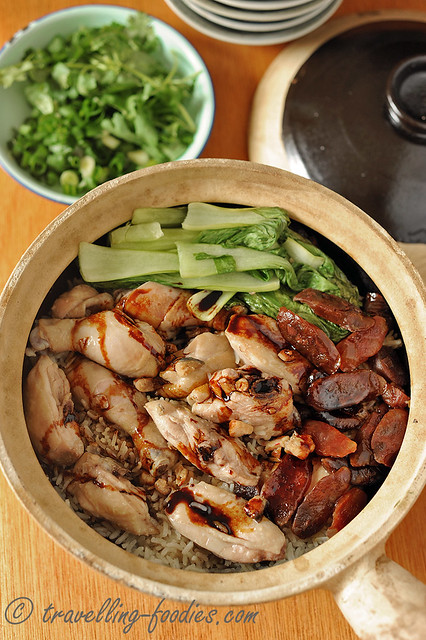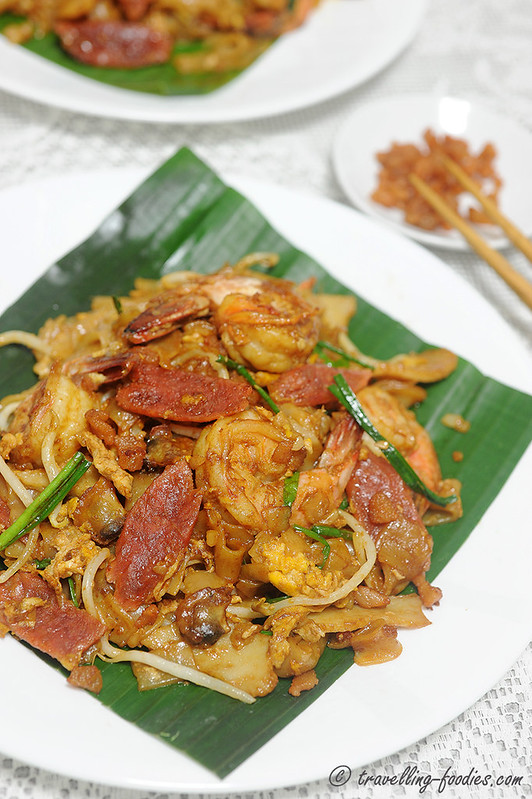炒粿條 Char Kway Teow
Among the numerous popular hawker favorites, char kway teow has a special place in the hearts of many. It is a traditional fried noodle dish whipped up by street hawkers who gathered at the now-demolished Ellenborough Market just across Clarke Quay along Singapore River. The area was also a well known enclave of the early Teochew settlers who knew this place as tsah tsun tau 柴船头, owing to the provision of fuel-related goods like firewood, charcoal and kerosene in this area. At night, some of these hawkers take to the nearby old Thong Chai Medical Institution 同济医院 for the supper crowd who flocked here after a session of tua hee 大戏 aka Chinese wayang opera nearby or a movie produced by Cathay Organisation at Majestic cinema just a short stretch down Eu Tong Sen Road. But as peddling of street food waned in the 1980s as it became outlawed, gone were the days when these illegal hawkers had to scurry and run away from the health inspectors, colloquially known as 地牛 “tee gu“. Together with the establishment of hawker centres around the island, local delights like char kway teow spread to the heartlands and became everyone’s favorite as well.
广式煲仔饭 Cantonese Claypot Rice – A Revisit…

The weather has been rather cooling of late and this makes me crave for piping hot food. Such an irony right I know… when it’s hot and wretched, we want something cold and chilling, and when the temperature takes a dip, we yearn for something to get our rumbling tummies all warm and happy. There are many things I love to cook and eat really warm, like stews, soups, porridge and of course claypot rice. I love eating 广式煲仔饭 Cantonese claypot rice for the piping hot and perfectly cooked grains with succulent bits of chicken and of course my favorite Chinese sausages and salted fish! Really yums!!!
(more…)
Penang Char Koay Teow 槟城炒粿条

Penang is literally a food paradise! And for many, one of the main highlights of Penang cuisine is its street food. A walk down some of the roads and alleys in Penang and one would be easily led by the nose quite literally, to a hawker stall or two showcasing some of the finest which Penang has to offer. Many of these hawker stalls are not permanent fixtures within a certain kopitiam or kedai, but merely makeshift carts driven around by motorcycles they are attached to, as their “chefs on wheels” peddle their signature dishes from place to place. Seemingly nomadic but in fact, true Penang foodies are in the know of the precise whereabouts of some of these famous stalls, i.e. at a particular junction between a certain “Lorong” and a certain “Jalan” in the daytime, or at which corner of a particular “pasar malam” by night. It could be rojak, laksa, or hokkien mee, but one thing remains a common trait amongst these street food stalls. They rely not on media publicity to draw attention and create awareness on their existence, but solely by word of mouth, through folks who share their gastronomic experiences at these stalls to their relatives, who in turn told their friends, who in turn told their neighbours. Many of them have only one item on their menu, bearing sharp contrast to what hotel buffets and established restaurant joints boast about. But for that one thing they do, they do it best.
(more…)
煲仔鸡饭 Cantonese Claypot Chicken Rice
We used to have an eathern stove at home when I was young, fueled by charcoal that could be kept warm for hours, as the hardened chunks of ebony slowly wasted away to become a crumbly ivory, until all that’s left was a disintegrated heap of cinder and ash. But using it could be quite a hassle to use, especially to kickstart the burning. But me ain’t no boy scout, so it was usually my father who “did the honours” to get the fire started. Once started, it served for a myriad of purposes, i.e. toasting belachan (fermentted shrimp paste) to make sambal, maintaining a large pot of broth for steamboat refills, or simply transferring out the charcoal pieces from that stove into a longish rectangular metal trough which was used to prepare kueh belandah (nyonya egg rolls) for chinese new year . In fact, steamboats in the past where fueled by charcoal which were “preheated” using the earthern stove as well! While some of the uses of an earthen stove were somewhat ritualistic, others remained very practical, and for me, the most practical and personal favorite “use” of the earthern stove has to be cooking 煲仔鸡饭 Cantonese Claypot Chicken Rice!


